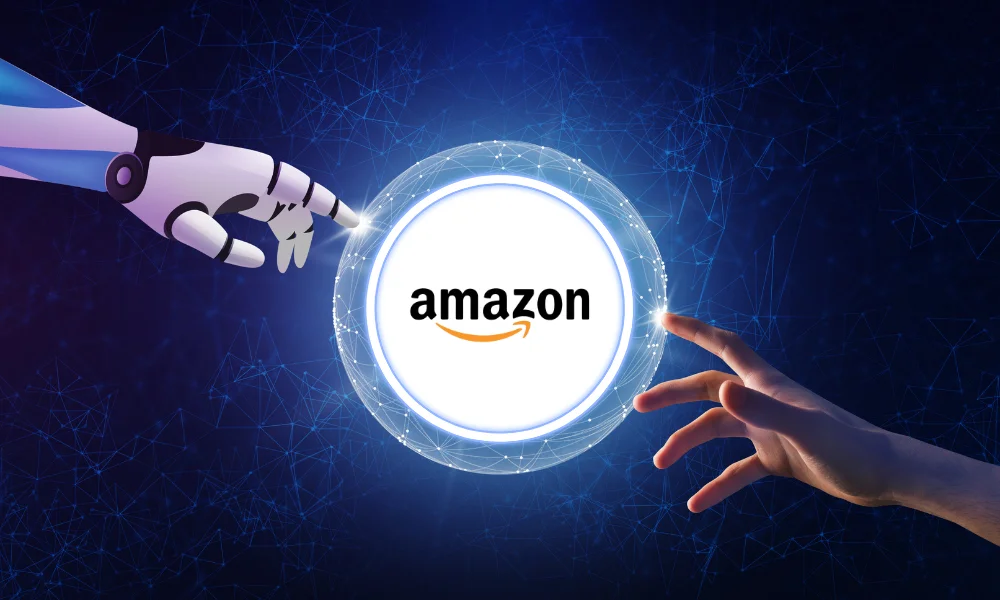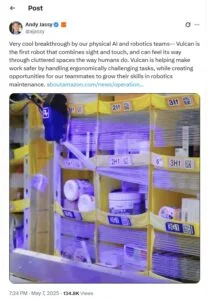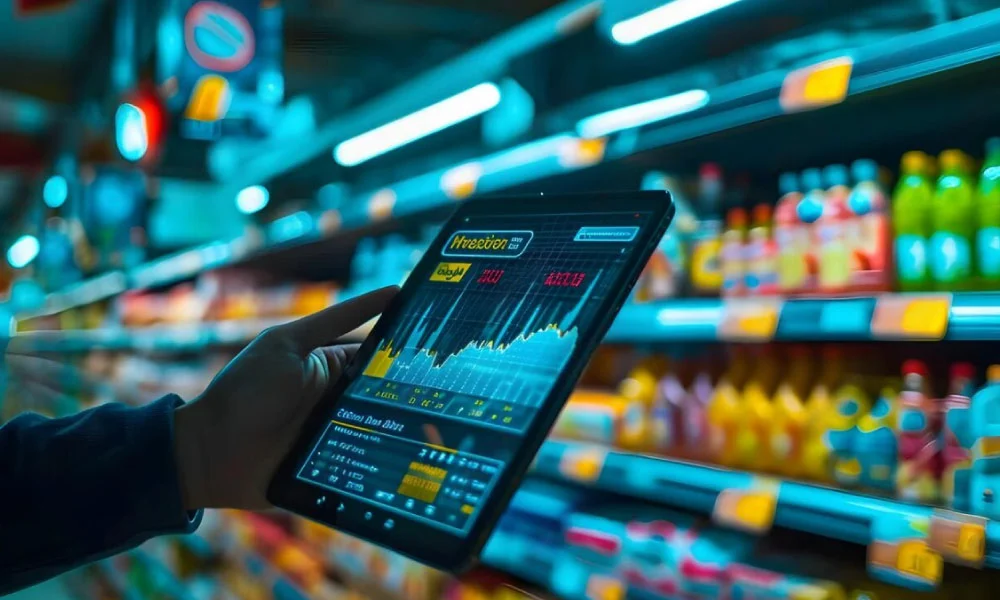While the AI advancements are at peak, the requirement for human resources is evidently at a toll. Under such circumstances, Amazon launched Vulcan, a robot that can automate warehouse functionalities effectively. Vulcan’s mechanism allows it to feel through touch. Reportedly, the new robots are set to replace warehouse workers and their tasks.
Amazon launched Vulcan last Wednesday, on 7th May, with the vision to make the tasks of the company’s human resources easier and safer. As per the announcement, the robotic breakthrough involves physical AI and advanced engineering. Amazon expressed that it is their very first robotic advancement with the ability to feel through touch.
Andy Jassy, Amazon’s CEO, took it to X and stated, “Very cool breakthrough by our physical AI and robotics teams-- Vulcan is the first robot that combines sight and touch, and can feel its way through cluttered spaces the way humans do....”
What does Amazon’s Vulcan offer?
Amazon’s Vulcan intends to improve overall warehouse operations with utmost efficiency. Alongside that, it also focuses on enhancing worker safety. Here are the key features of the development-
The Ability to Touch and Feel: Vulcan is capable of understanding elements by touching them, which is a significant component for warehouse automation. Unlike other robotic mechanisms, it doesn’t just pick up any product or package with a command. Rather, Vulcan can use the sense of touch and sight to identify a product and place it in the appropriate section.
Human-AI Connection: As per Amazon, the development of Vulcan can boost human-robot collaboration rather than entirely replace humans, prioritizing worker safety.
The inventory pods at Amazon’s warehouse are almost 8 feet taller, which makes it challenging for workers to cover them. Placing a ladder to reach the top row and managing products is often time-consuming and tiring. At this moment, Vulcan can assist human workers to optimize the top rows of the inventory, offering more opportunities for collaboration.
Enhanced problem solving: While picking up products and arranging them in the upper pods of the inventory, human workers need to make the complicated and time-consuming effort of placing a ladder, climbing it, and carefully handling products. Vulcan can automate this process by identifying products that require extra care.
What Does the Future Hold?
The development of Vulcan can significantly increase the scarcity of employment and cause job loss. The World Economic Forum remarks that AI-tech trends can take over 92 million job roles, currently executed by humans. On the other hand, the transition toward AI will also create 170 million new job opportunities. Such stats are an indication that AI integration is nothing but a two-edged sword that can benefit as well as create challenges for humans.
Notably, the future is set to experience further sophisticated advancements in the AI sector that will remarkably simplify complex human tasks. It will surely increase the collaboration between humans and technology in the upcoming years. The announcement of Amazon’s Vulcan is a specimen of such breakthroughs. Adding high precision and efficiency, the advancement is defining a new generation of robotics in warehouse management.
Stay informed about the latest innovation and tech practices with KnowledgeNile!
Read More:
Essential Types of Robots and Their Role in Automation
Robotic Process Automation Implementation: Steps You Should Follow
Cognitive Automation and Robotic Process Automation: Key Differences






